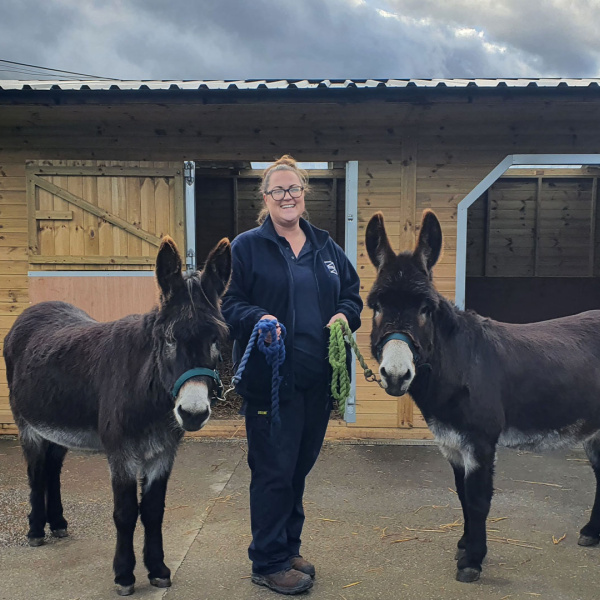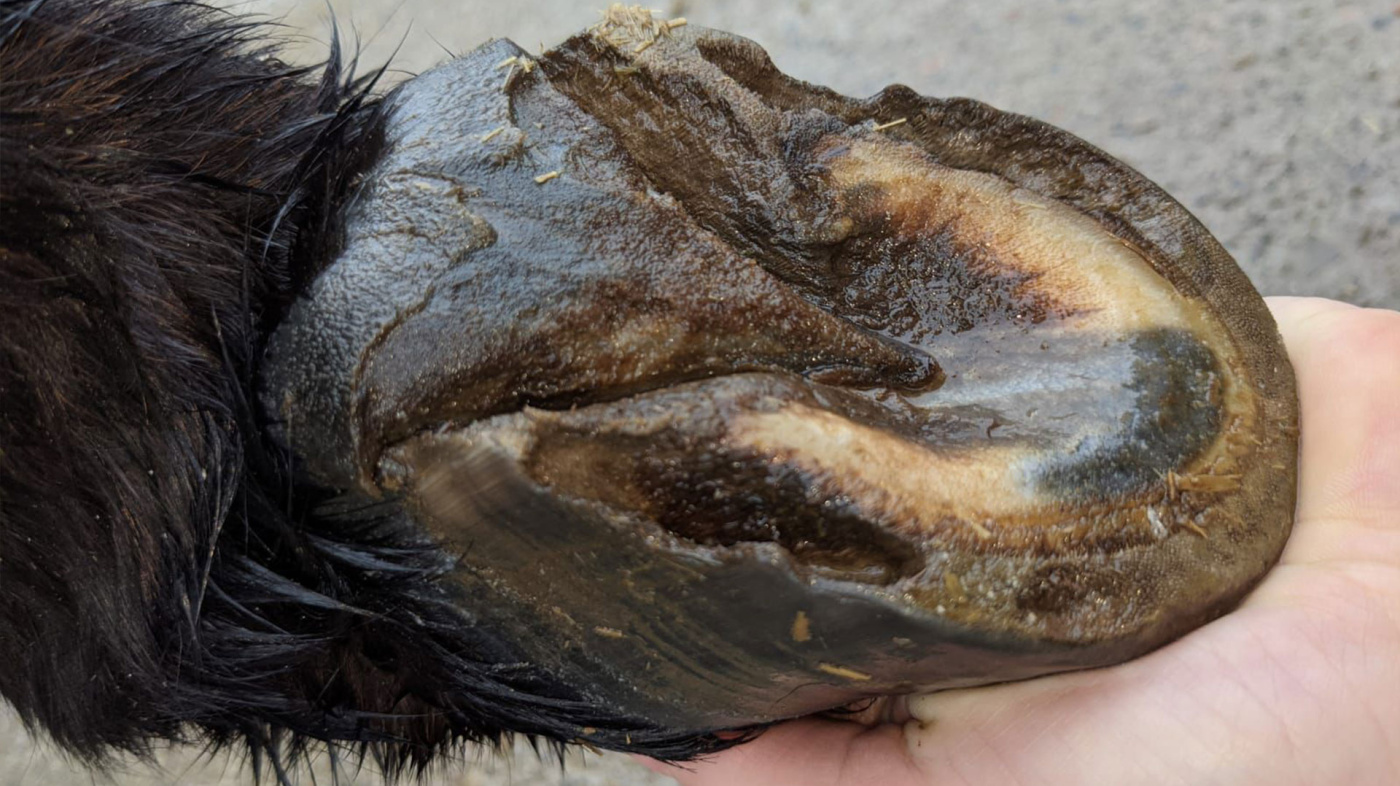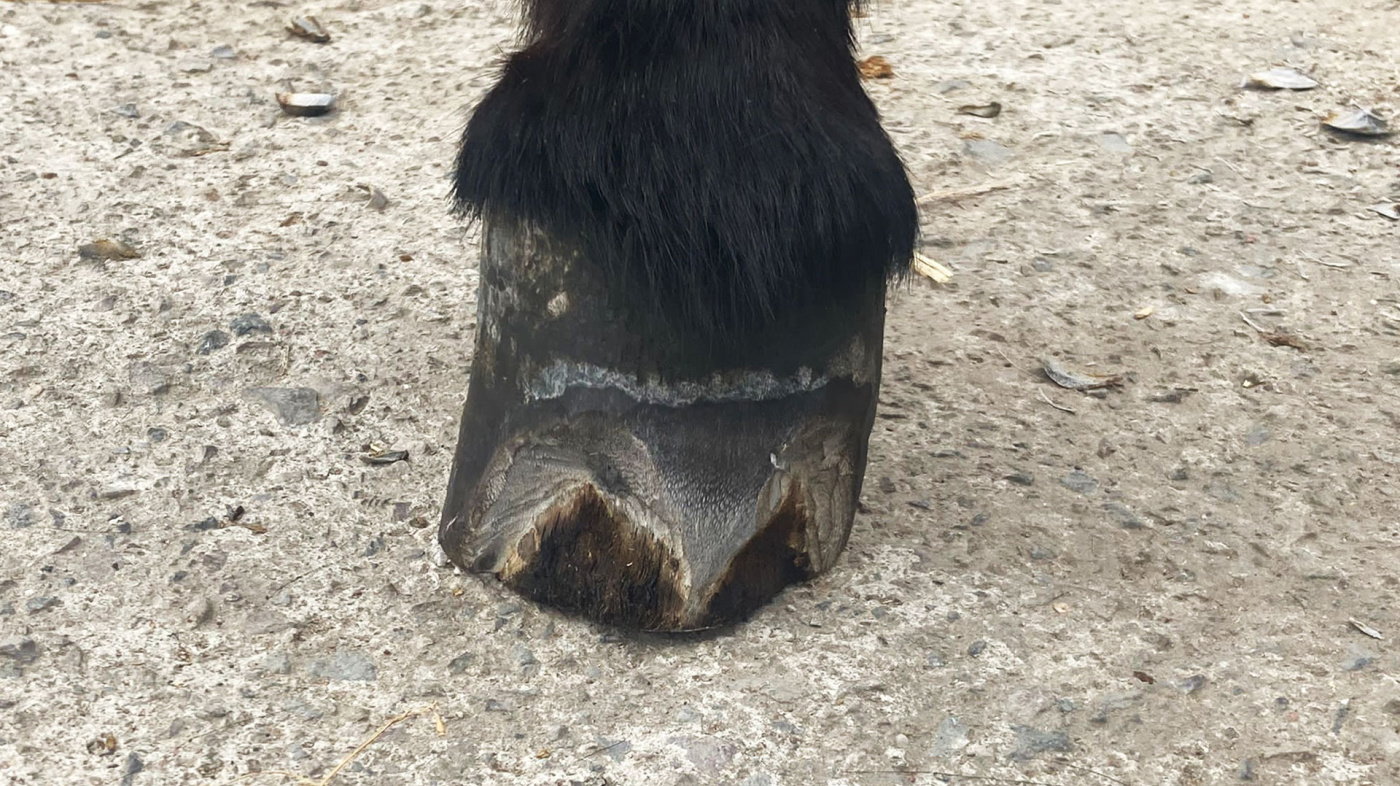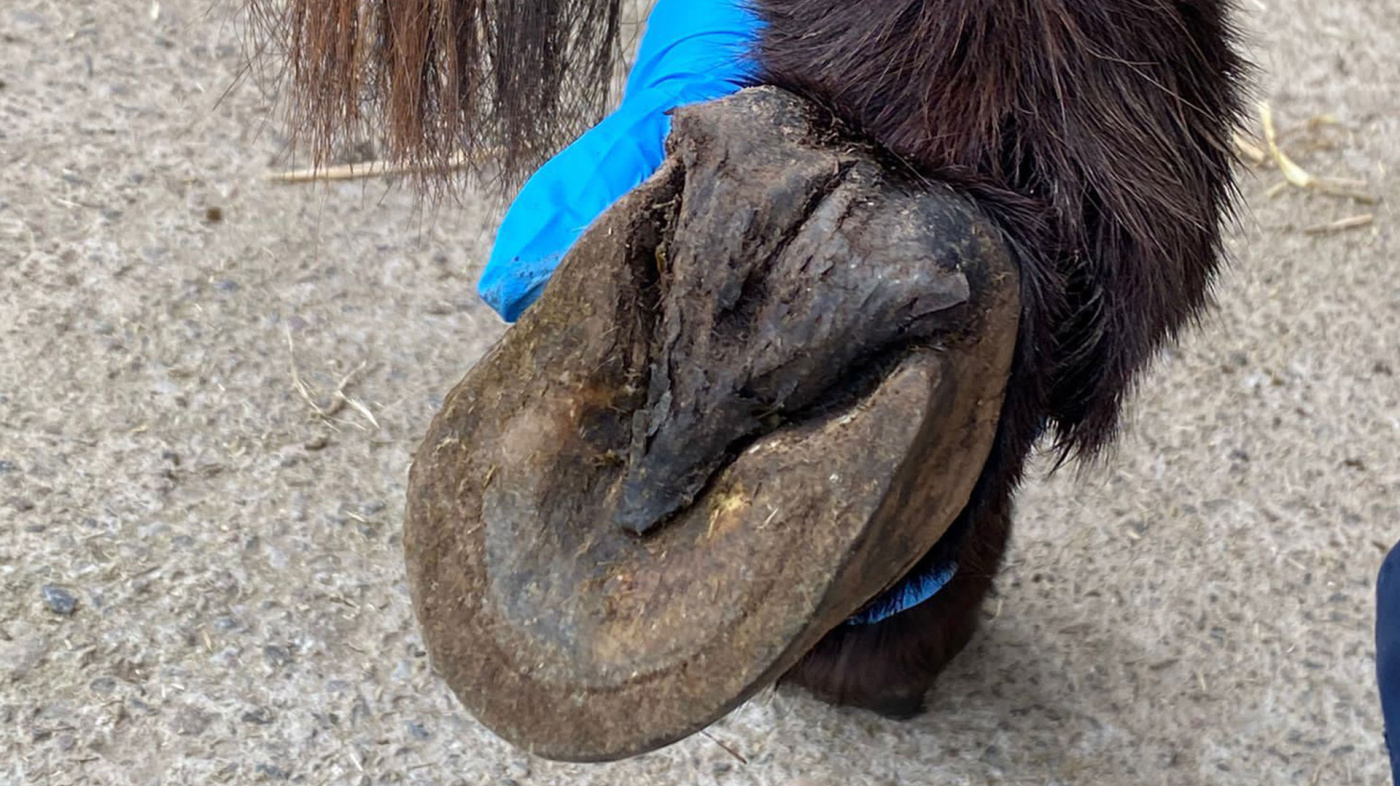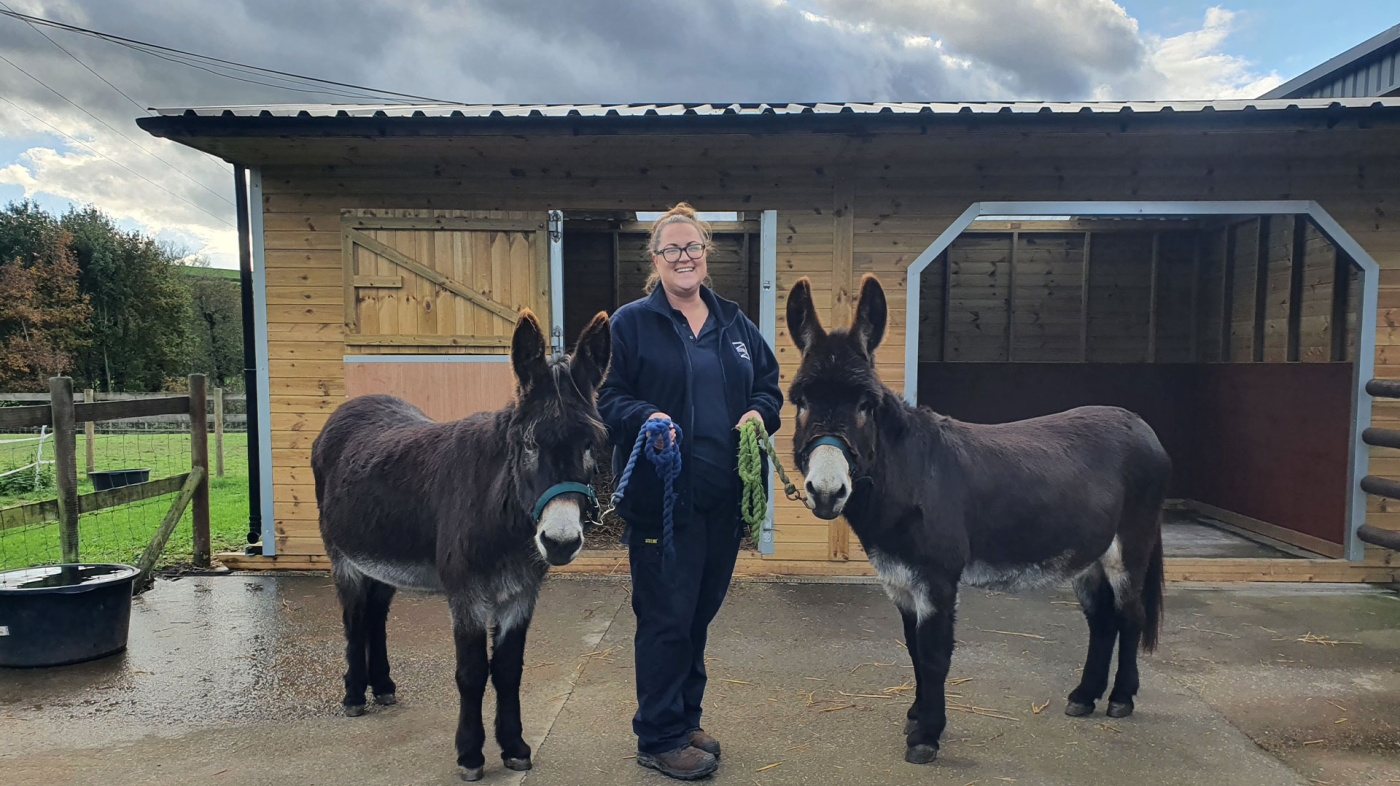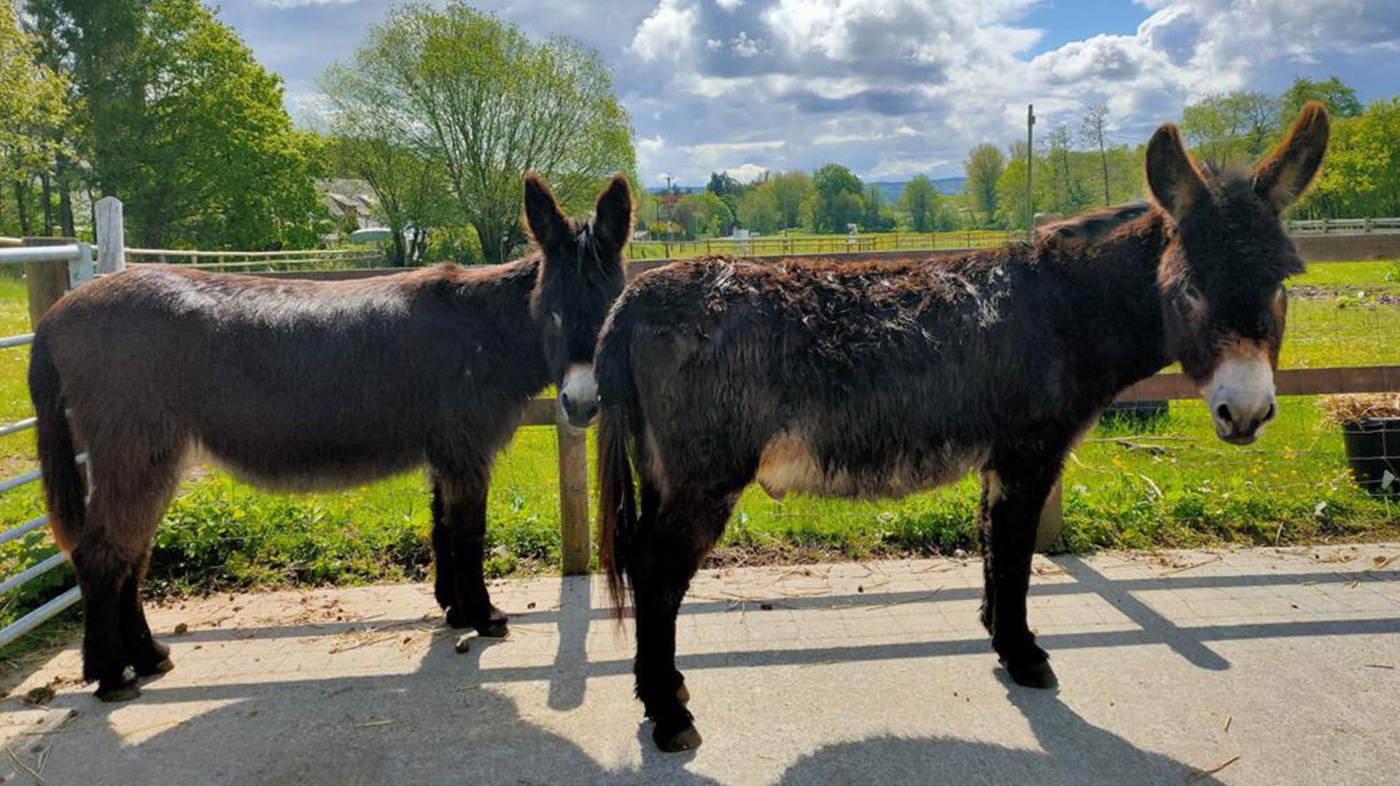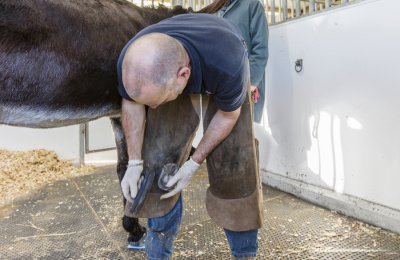White line disease, or ‘seedy toe’, is one of the most common causes of foot issues among donkeys in the UK, and a condition that staff at The Donkey Sanctuary see all too often.
Many donkey owners and professionals accept that it is very common but maintaining good foot hygiene and regular foot care can help prevent its occurrence.
The problem arises from a combination of the UK’s wet climate and the porous nature of donkeys’ hooves.
Donkeys originated on the plains of Africa, where they would walk up to 12 miles a day to satisfy their nutritional needs by browsing on the sparse vegetation. The hard, dry and abrasive surfaces give their hooves a natural ‘pedicure’ – a far cry from the lush soft pastures they graze in the UK.
Donkeys seem to be more susceptible to white line disease than horses. It can affect any of the four feet and presents itself as necrotic (dead cell tissue) and crumbly grey-white material along the white line on the sole of the hoof.
If it is left untreated, it commonly leads to infection, taking the form of a white line abscess that can cause the donkey to suffer.
Donkey Welfare Adviser Katana Ashby explains: “Unfortunately, white line disease is a condition I see all too often in donkeys.
“For many people, there appears to be a common opinion that it is unavoidable and should just be accepted as normal for donkeys in the UK.
“I disagree with this. It comes down to consistent and regular hoof health care. By picking out the hooves daily, allowing them time to dry out on a hard dry surface, and with regular treatment by a farrier, a donkey’s hooves can be kept healthy.”
Katana adds: “I have also seen committed donkey owners successfully treat seedy toe and repair the hooves back to health.”
One of our Guardian homes Coleg Gwent, a further education college near Newport in South Wales that runs a number of animal management courses, is home to two donkeys named Billy and Ben, who are extremely popular with students.
Back in February and March 2021, Ben experienced two bouts of lameness due to white line disease. Working with their veterinary team and farrier, college staff were able to come up with an action and management plan.
Throughout the following four months, they implemented additional foot picking and iodine treatment, which was successful in stalling the condition but staff struggled to see any noticeable recovery.
Then in June of that year, x-rays were taken to determine the extent of the disease. This led to their farrier and vet working closely together. By cutting the hoof back to expose the tissue underneath, the infection could be treated at the root and ensure it was unable to spread further.
Ben’s feet were then wrapped in a sugar and iodine solution (sugardine) for two weeks, which helped them to harden, as well as continuing to fight any infection.
As the winter months approached, access to pasture was strictly controlled to ensure his feet remained as healthy as possible. This resulted in the vet and farrier reporting his feet were ‘perfect’, with no further sign of the disease.
The treatment helped college staff develop a management plan that students at the college could learn from as part of their course.
The Donkey Sanctuary recommends a number of best-practice techniques to avoid white line disease. These include cleaning the hooves daily, while monitoring the integrity of the white line and the rest of the hoof structure.
The donkey’s bedding should also be frequently changed, avoiding humidity and the accumulation of faeces and urine, especially during wetter seasons.
Finally, regular farrier visits should be arranged to check and trim the feet. This should be undertaken every six to ten weeks depending on the amount of exercise or wear, the age of the donkey and/or the presence of hoof pathology.
If seedy toe is diagnosed, its management and trimming should be discussed with your farrier or vet. The farrier will remove all the damaged horn of the hoof, a procedure that should not be painful, but it may be necessary to remove a lot of hoof wall if the disease has progressed.
In some circumstances it may also be necessary to take an x-ray before removing a large amount of hoof wall to check the stability of the pedal bone.
A good, clean hardstanding and dry bedding are important for the health of all donkeys’ feet, but for animals with recurrent white line disease it is very important.
Generally, donkeys with the disease will not be lame, but depending on the severity of the pathology or the presence of other associated diseases, lameness could be present.
As with most things, prevention is far better than cure and following the best practice guide will help avoid its occurrence in the first instance.
For more advice on preventing, recognising and treating white line disease in donkeys and mules please see the link below.
